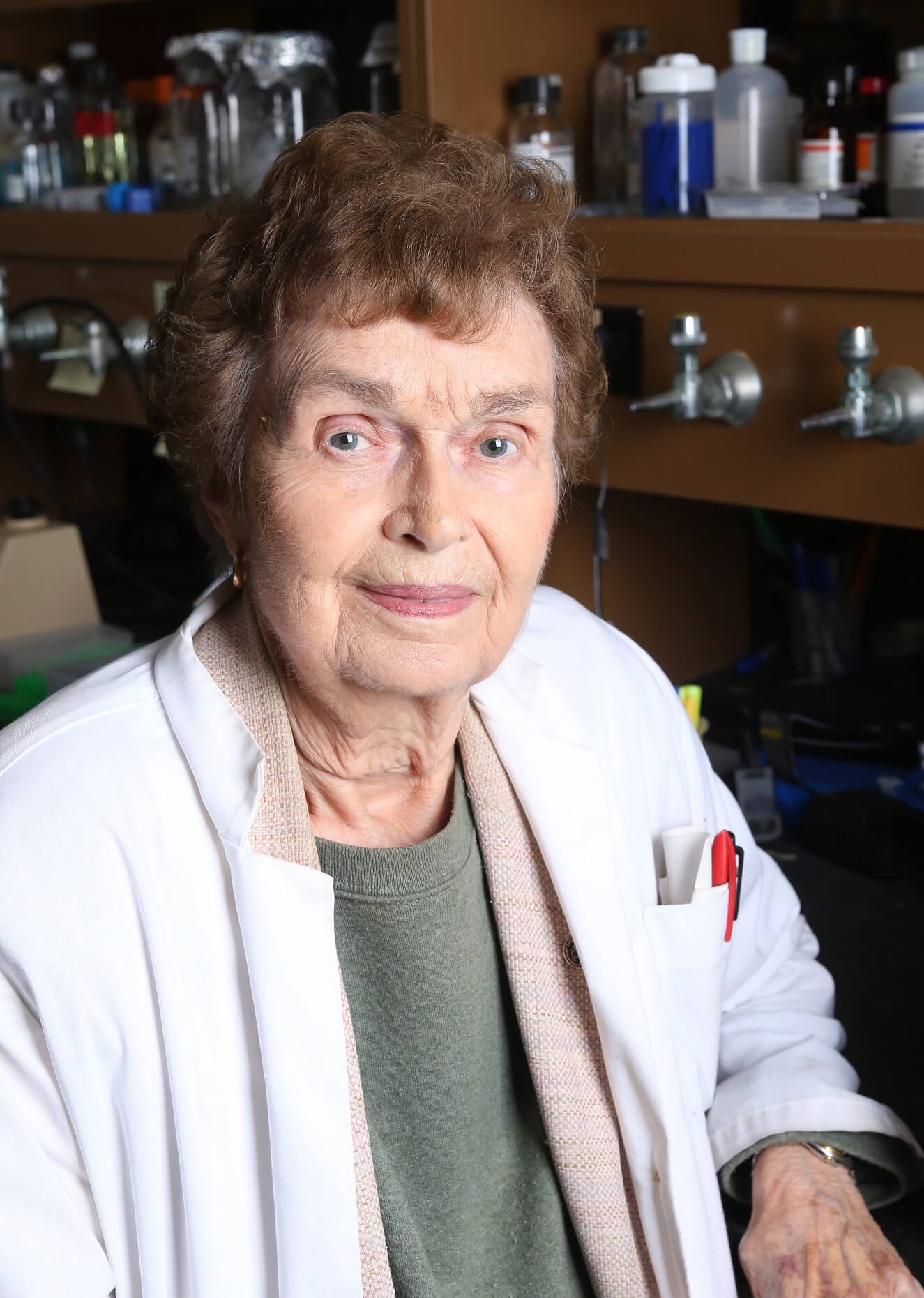Remembering the life and legacy of Virginia Ferris
The College of Agriculture mourns the loss of Professor of Nematology Virginia Ferris, who passed away on August 14. “In her more than 50 years in the Department of Entomology, she was one of the world’s leading experts on the soybean cyst nematode, a destructive plant parasite that has cost producers millions of dollars in crop damage,” said Karen Plaut, interim dean of the College of Agriculture. “She also had a significant influence on the department’s teaching, research, extension, and culture.”

Virginia Ferris
Blazing a trail
In the early part of her career, Virginia Ferris conducted research under a microscope, often from the spare bedroom in her home. Her passion for science never waned, and as the first woman appointed to the Purdue Agriculture faculty, Ferris helped pave the way for women in agriculture as research methods simultaneously advanced.
“Even after the advent of molecular methods, you had to grow large numbers of nematodes to find the molecular sequence you wanted,” she said in an earlier interview. “Discoveries in molecular biology now make it possible to get vast amounts of DNA out of a single nematode.” Though Ferris’ later research no longer required observation of the tiny worms—just extraction of their DNA—she kept the microscope, a device that she had been fascinated with in her youth. “When you compare what scientists find at the molecular level today with conclusions they based solely on microscope observations back then, many of their early conclusions still hold true today,” she said in the interview.
After years of research that combined traditional science methods and advances made possible by genomics, Ferris, along with fellow researchers who included her husband, the late John Ferris, Jamal Faghihi, and Rick Vierling, identified genes in soybeans that provided resistance to the cyst nematode, a pest that has cost farmers millions in crop losses. The Purdue-patented technology, licensed as CystX®, is now commercially available in many soybean varieties. The research earned the group the 2001 Purdue Agriculture Team Award, which honors the achievements of faculty and staff who collaborate on interdisciplinary teams.
Ferris’ groundbreaking research was one more step in a groundbreaking career.
Ferris’ passion for science began early in life. After high school, she packed her bags and a consuming interest in biology and left small-town Kansas for Wellesley College on the East Coast. At the all-women’s college, she found a competitive academic environment, female professors to serve as role models, and the self-confidence to more than hold her own when she entered Cornell University as the only female incoming graduate student in plant pathology.
Her years at Cornell shaped both her professional and personal life. She earned a Ph.D. in plant pathology, joined the Cornell faculty as an assistant professor, and began research in nematology. It was there that she met and married John Ferris, her colleague, major collaborator, and best friend until his death in 2000.
The couple left New York for the Midwest in 1956. “I used my last month’s paycheck from Cornell to buy a microscope,” Ferris said in the interview. It was difficult for women to obtain faculty positions, particularly in the conservative Midwest, so she set up a home lab and did research as a freelance consultant, first in Illinois and then in West Lafayette, when John joined the Purdue entomology faculty in 1958.
“Nematology was a young science,” Ferris noted in the interview. “I grew up right along with it.” She worked tirelessly, conducting research, editing professional journals, lecturing, and networking with other scientists. With their two children in tow, the Ferrises traveled extensively, collecting different species of nematodes, often processing soil samples in hotel bathrooms. She was already one of the foremost experts on nematodes when she was appointed to the Purdue Agriculture faculty in 1965.
Mentoring others—in the lab and on campus
By 1974, she was a full professor in the Department of Entomology, having already added associate professor, assistant dean of the graduate school, and assistant provost to her résumé. By then she’d also been president of the Society of Nematologists, associate editor of the Journal of Nematology, and recipient of the Helen B. Schleman Gold Medallion Award, annually bestowed by Purdue’s Mortar Board chapter to a faculty or staff member for contributions to Purdue, especially in the promotion and advancement of women students and women’s issues.
“Few careers with which I have been made aware share the breadth of reach and stretch of scholarship demonstrated by the career of Dr. Virginia Ferris,” said Robert Walz, Indiana’s state chemist and seed commissioner, and a former colleague and student of Ferris. “She exemplified the authority of a respected academic pedagogue with high professional expectations of her students,” he wrote in a letter recommending her for the Purdue Agricultural Alumni Association 2017 Certificate of Distinction.
Ferris spoke often about the role of women in science and academia. Some of her listeners “find the stories hard to believe,” she said in an interview this year for the Certificate of Distinction. “Women have proven themselves — there’s no question about it.” And Virginia Ferris paved the way for many of them by proving herself through her scientific achievements and dedication to the pursuit of research excellence.
You can share memories and leave condolences in an online guest book for Professor Ferris. A memorial service will be held in the fall.